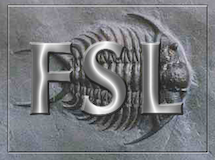Contents
- Introduction
Contents
- User Guide
Important Note
Currently ( as of FSL 6.0.6 ) the 6.0.x version of POSSUM is non-functional due to API/dependency issues. To use POSSUM please install FSL 5.0.11 via the legacy installer.
Research Overview
POSSUM (Physics-Oriented Simulated Scanner for Understanding MRI) is a software tool that produces realistic simulated MRI and FMRI images or time series. POSSUM is part of FSL (FMRIB's Software Library). POSSUM has an easy-to-use graphical user interface (GUI) and its component programs can also be run from the command line. POSSUM includes tools for the pulse sequence generation, signal generation, noise addition and image reconstruction.
POSSUM requires a gradient echo pulse sequence, a segmented object with known tissue parameters, and (optionally) a motion sequence. The way the Bloch equations are solved, by tracking and updating the magnetisation vector through time for every object voxel, allows the changes that occur during the acquisition of one TR to be modelled and then carried through to the acquisition of the next TR, making it possible to simulate spin history effects, motion during the readout periods and interactions that these have with Bo inhomogeneities.
The simulator has the capability to turn on or off various subject- and scanner- related effects, which is not possible in real scanning and therefore has a wide range of applications. These applications include the simulation and removal of various artifacts, both in MRI and FMRI. Furthermore, by generating the "ground truth", the FMRI simulator can be used for evaluation and validation of software tools for FMRI analysis methods (e.g. motion correction, registration, statistical analysis of images, etc.).
If you use POSSUM in your research, please make sure that you reference the articles listed below.
- I Drobnjak, D Gavaghan, E Süli, J Pitt-Francis and M Jenkinson. Development of an FMRI Simulator for Modelling Realistic Rigid-Body Motion Artifacts. Magnetic Resonance in Medicine, 56(2), 364-380, 2006.
- I Drobnjak, G Pell and M Jenkinson. Simulating the effects of time-varying magnetic fields with a realistic simulated scanner. Magnetic Resonance Imaging, 28(7), 1014-21, 2010.
We have extended POSSUM to produce realistic diffusion-weighted MR datasets. This extension is described in our recent paper (doi:10.1016/j.neuroimage.2015.11.006), which also demonstrates its application to validating techniques for correcting eddy-current and motion artefacts. Code for simulating your own datasets is available at https://github.com/marksgraham/DW-POSSUM. We have additionally made some simulated datasets available at https://www.nitrc.org/projects/diffusionsim/. Please send any questions/comments to mark.graham [at] kcl.ac.uk.
If you use the simulation code or datasets in your research, please make sure that you reference:
Mark S. Graham, Ivana Drobnjak and Hui Zhang. Realistic simulation of artefacts in diffusion MRI for validating post-processing correction techniques, NeuroImage 125, 1079-1094, 2016.
If you use the spin-echo functionality in POSSUM (forthcoming), or any of the pre-simulated datasets with susceptibility artefacts, please further reference:
- Quantitative assessment of the susceptibility artefact and its interaction with motion in diffusion MRI, PLoS ONE 12(10): e0185647, 2017. Mark S. Graham, Ivana Drobnjak, Mark Jenkinson and Hui Zhang.
